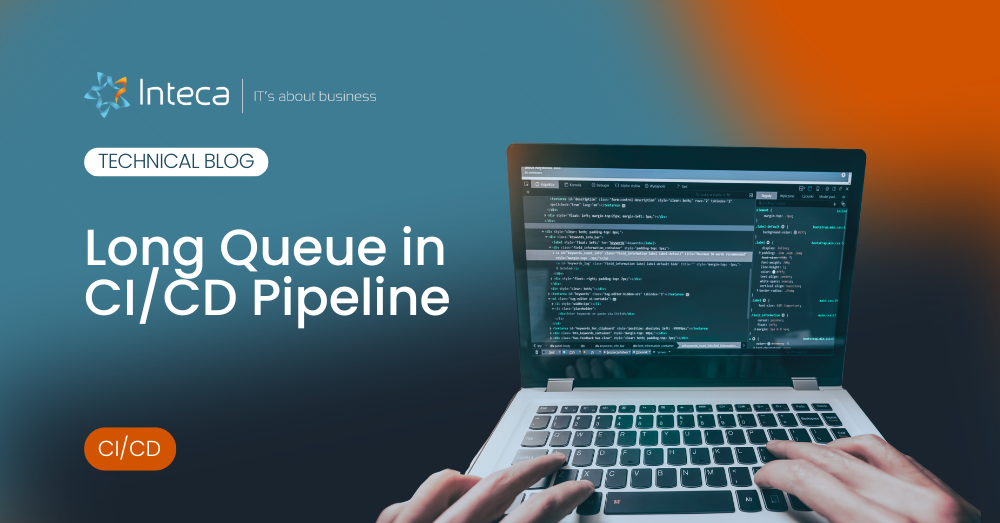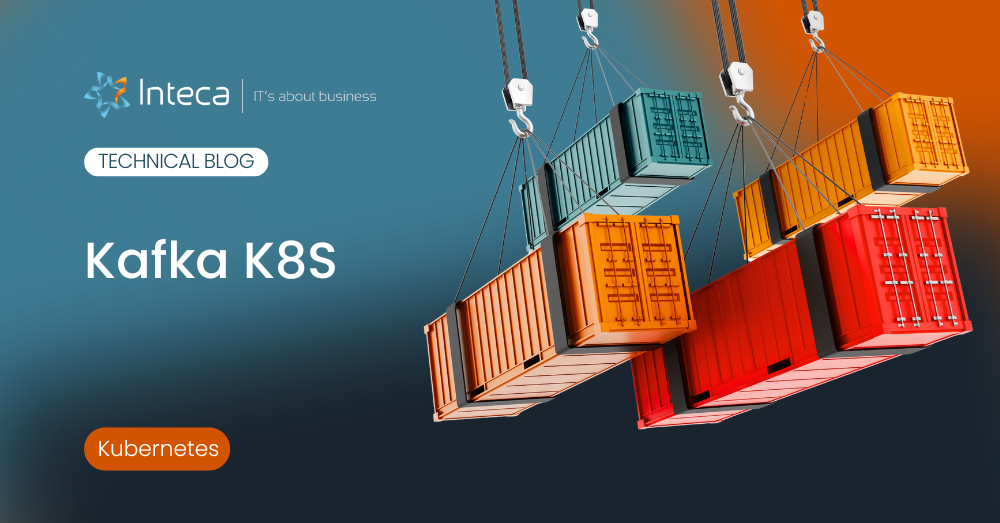The purpose of this article is to highlight the challenges organizations face in their software development process due to long queue times and bottlenecks in CI/CD pipelines. We want to provide the reader with insights and solutions to overcome these challenges, ensuring a streamlined and efficient development process.
Introduction: Are Long Queue Times and Bottlenecks Hindering Your Software Development?
In the fast-paced world of software development, continuous integration and continuous delivery (CI/CD) pipelines have become indispensable. However, many organizations still struggle with long queue times and bottlenecks in their pipelines. These challenges can lead to delayed product releases, increased costs, and reduced competitiveness. In this article, we will explore the reasons behind these issues and present solutions to help you optimize your CI/CD pipeline for increased efficiency and productivity.
- The impact of long queue times and bottlenecks in CI/CD pipelines
- Identifying the root causes of these challenges
- Strategies to streamline and optimize your CI/CD pipeline
- Leveraging the latest tools and technologies to overcome obstacles
The Impact of Long Queue Times and Bottlenecks on Your Software Development Process
Queue times and bottlenecks in CI/CD pipelines can significantly affect your organization’s software development process, leading to:
- Increased costs: Long queue times result in wasted resources, as developers wait for builds and tests to complete before they can proceed with their tasks. This, in turn, can lead to increased costs for your organization.
- Reduced productivity: When developers are forced to wait for the pipeline to complete, they are unable to focus on their core tasks, leading to reduced productivity.
- Delayed releases: Bottlenecks in the pipeline can result in delayed product releases, which can negatively impact your organization’s competitiveness and customer satisfaction.
Uncovering the Root Causes of Long Queue Times and Bottlenecks
To effectively address the issues of long queue times and bottlenecks, it’s crucial to identify their root causes. Common factors contributing to these challenges include:
Insufficient Resources and Infrastructure
In many cases, long queue times and bottlenecks are caused by inadequate resources and infrastructure. This may result from limited computing power, insufficient storage, or a lack of appropriate tools and technologies.
Inefficient CI/CD Processes
Inefficient CI/CD processes can also contribute to long queue times and bottlenecks. For example, the lack of parallelization or the absence of effective caching mechanisms can lead to slow build and test execution, causing delays in the pipeline.
Poorly Optimized Pipeline Configuration
A poorly optimized pipeline configuration can exacerbate the issues of long queue times and bottlenecks. This may be due to suboptimal settings, unnecessary steps, or a lack of best practices in pipeline design and management.
Strategies to Streamline and Optimize Your CI/CD Pipeline
To overcome long queue times and bottlenecks in your CI/CD pipeline, consider implementing the following strategies:
Scale Your Resources and Infrastructure
Ensure your infrastructure has adequate resources to handle the demands of your CI/CD pipeline. This may involve investing in more powerful computing resources, expanding storage capacity, or adopting cloud-based solutions that can scale with your organization’s needs.
Optimize Your CI/CD Processes
Review your CI/CD processes to identify areas of inefficiency and implement improvements. This may involve introducing parallelization to speed up build and test execution or implementing effective caching mechanisms to reduce redundant tasks and save time.
Refine Your Pipeline Configuration
Take the time to optimize your pipeline configuration, removing unnecessary steps and implementing best practices in pipeline design and management. This can help reduce bottlenecks and shorten queue times, improving overall pipeline performance.
Leverage the Latest Tools and Technologies
Embrace modern tools and technologies that can help streamline your CI/CD pipeline. This may include adopting containerization, implementing infrastructure as code (IAC), or using cutting-edge CI/CD platforms that offer advanced features like parallelization and dynamic configuration.
Implementing strategy with Bazel and AppMomentum
One of the main component used in AppMomentum Platform is Bazel. Bazel is a powerful build tool that can help address long queue times and bottlenecks in your CI/CD pipeline. By taking advantage of Bazel’s features such as distributed building, remote caching, and incremental builds, you can significantly improve the performance and efficiency of your software development process.
Distributed Building with Bazel
Distributed building allows you to parallelize your builds across multiple machines or cloud resources, reducing the overall build time. Bazel supports distributed building through its Remote Execution API, enabling you to offload resource-intensive tasks to a pool of remote workers. By distributing your builds, you can minimize queue times, better utilize available resources, and improve the overall efficiency of your CI/CD pipeline.
Remote Caching for Faster Builds
Remote caching in Bazel enables you to store and share build artifacts across your team and CI/CD infrastructure, reducing the need to recompile unchanged code. Bazel’s remote caching feature works by storing build outputs in a central cache, which can then be accessed by other builds. This allows subsequent builds to reuse previously compiled artifacts, significantly reducing build times and improving the overall efficiency of your CI/CD pipeline.
Incremental Builds for Enhanced Efficiency
Bazel’s incremental builds feature helps you save time and resources by only rebuilding the parts of your project that have changed since the last build. Bazel achieves this by utilizing a fine-grained dependency graph, which tracks the relationships between source files, generated artifacts, and build actions. When a change is detected in your source code, Bazel only recompiles the affected components and their dependencies, rather than rebuilding the entire project. This results in faster build times and a more efficient CI/CD pipeline.
Integrating Bazel into Your CI/CD Pipeline for Optimized Performance
By incorporating Bazel and its features into your CI/CD pipeline, you can address long queue times and bottlenecks, resulting in a more efficient and agile software development process. Here are some steps to help you integrate Bazel into your pipeline:
Assess Your Current Build System and Identify Bottlenecks
Before integrating Bazel, review your current build system to identify any bottlenecks or inefficiencies. This will help you determine where Bazel’s features, such as distributed building, remote caching, and incremental builds, can have the most significant impact on your pipeline’s performance.
Migrate Your Build Configurations to Bazel
To take full advantage of Bazel’s features, you will need to migrate your existing build configurations to Bazel’s BUILD and WORKSPACE files. This process may require some refactoring of your build scripts and dependencies, but the improved performance and efficiency will be well worth the effort.
Set Up Remote Execution and Caching Infrastructure
To leverage Bazel’s distributed building and remote caching features, you will need to set up the necessary infrastructure, which can include dedicated build workers or cloud-based resources. Configure your Bazel settings to use the remote execution and caching services, ensuring that your builds are distributed and cached efficiently.
Monitor and Optimize Your Bazel-Based CI/CD Pipeline
After integrating Bazel into your CI/CD pipeline, continue to monitor its performance and optimize it as needed. Track relevant KPIs, such as build times and resource usage, to identify areas for improvement and measure the effectiveness of your optimizations.
By leveraging Bazel and its powerful features, you can effectively address long queue times and bottlenecks in your CI/CD pipeline, ensuring a more efficient and agile software development process.
Adopting a Proactive Approach to Monitor and Optimize Your CI/CD Pipeline
Monitoring and optimizing your CI/CD pipeline should be an ongoing effort. By continuously analyzing your pipeline’s performance and addressing issues as they arise, you can ensure that your software development process remains efficient and agile. Here are some best practices to help you maintain an optimized CI/CD pipeline:
Establish a Comprehensive Monitoring System
Implement a monitoring system that provides real-time insights into your CI/CD pipeline’s performance. This will enable you to quickly identify and address any bottlenecks or issues that arise, minimizing their impact on your software development process. Monitoring tools should cover various aspects, including build times, queue times, test execution, and deployment success rates.
Set and Track Key Performance Indicators (KPIs)
Define KPIs that are relevant to your organization’s goals and objectives, and use them to track your CI/CD pipeline’s performance. Some common KPIs include deployment frequency, lead time for changes, change failure rate, and mean time to recovery. By tracking these KPIs, you can identify areas for improvement and measure the effectiveness of any optimizations you implement.
Conduct Regular Reviews and Audits
Schedule periodic reviews and audits of your CI/CD pipeline to assess its performance and ensure it aligns with your organization’s objectives. These reviews should include an examination of your tools, technologies, processes, and configurations, as well as an analysis of your pipeline’s performance data. Use the insights gained from these reviews to make data-driven decisions and drive continuous improvement.
Harnessing the Power of AppMomentum to Overcome CI/CD Pipeline Challenges
AppMomentum is a platform that can help organizations optimize their software development process by addressing long queue times and bottlenecks. Connecting our application modernization services with features like parallelization, dynamic configuration, remote chache, distributed builds and incremental builds AppMomentum enables faster end-to-end builds and reduced queue times, resulting in:
- Increased developer productivity: By minimizing system maintenance time and improving code quality, AppMomentum can boost developer productivity by 10-20%.
- Reduced infrastructure costs: AppMomentum’s efficient use of CI/CD infrastructure can lead to savings of up to 50% in infrastructure costs.
- Shortened software development build time: Organizations using AppMomentum have reported a 50% reduction in end-to-end software development build time.
Conclusion: Streamline Your CI/CD Pipeline for Improved Efficiency and Productivity
Long queue times and bottlenecks in CI/CD pipelines can have a significant impact on your organization’s software development process, leading to increased costs, reduced productivity, and delayed product releases. By identifying the root causes of these issues and implementing strategies to optimize your pipeline, you can overcome these challenges and enhance your organization’s efficiency and productivity. Leveraging modern CI/CD platforms like AppMomentum can further streamline your software development process, ensuring a competitive edge in today’s fast-paced digital landscape.
- Optimize your CI/CD pipeline by addressing resource limitations, refining processes, and fine-tuning configurations
- Adopt advanced tools and technologies to stay ahead of the curve
- Consider using AppMomentum to boost developer productivity, reduce infrastructure costs, and shorten software development build time




